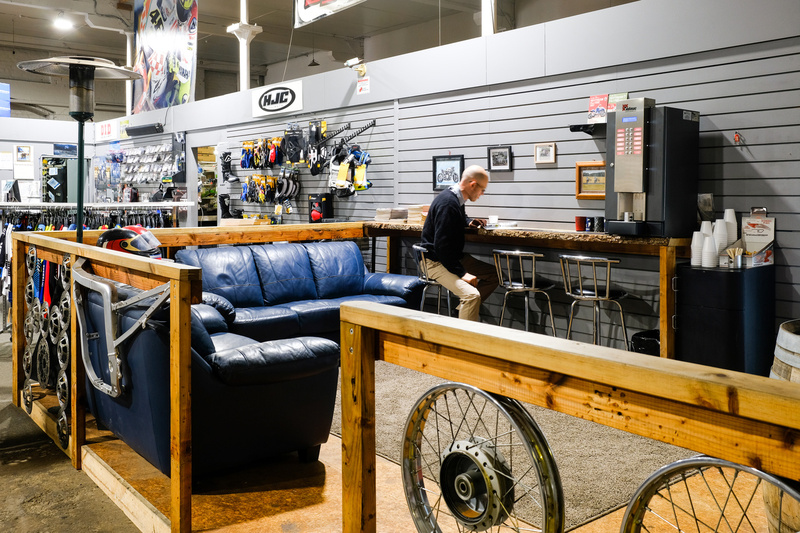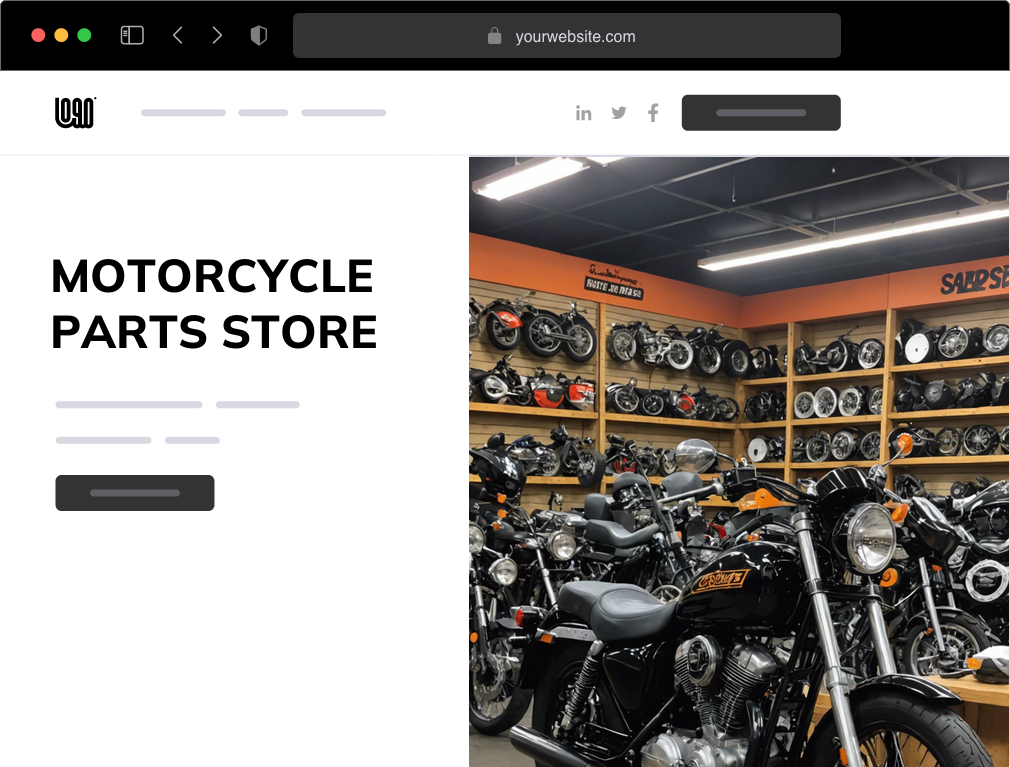Release Efficiency with Premium Motox Parts NZ Available Below
Wiki Article
Understanding the Vital Parts of a Bike: A Comprehensive Guide for Enthusiasts
For bike enthusiasts seeking to raise their riding experience and ensure their bikes run smoothly, comprehending the essential components of a bike is paramount. Each element, from the engine's intricate workings to the crucial role of the stopping systems, not just affects performance but likewise security and convenience. This guide will go through the fundamental components that every cyclist should know with, allowing notified choices in both maintenance and potential upgrades. As we begin this expedition, one must ask: just how does each part interact to create the seamless ride every enthusiast looks for?Engine Elements

The camshaft plays a crucial role in controlling the timing of the engine's shutoffs, guaranteeing the specific opening and closing necessary for efficient fuel and air intake, in addition to exhaust expulsion. This timing is important to keeping ideal engine efficiency and effectiveness. In addition, the carburetor or gas injection system, depending upon the bike design, is accountable for blending air with gas in the appropriate ratio for burning.
The air conditioning system, either air or liquid-based, functions to keep the engine's temperature level within functional restrictions, preventing overheating and guaranteeing durability - mx parts nz. Each element, carefully created and incorporated, adds to the seamless procedure of the engine, specifying the motorbike's power output and overall performance
Transmission System
Essential to the motorbike's functionality, the transmission system makes sure reliable power transfer from the engine to the wheels. This system comprises several vital parts, including the clutch, transmission, and last drive, each playing a crucial duty in equating the engine's power into motion. The clutch, typically run by a hand bar, offers to engage and disengage the engine from the transmission, permitting for smooth gear modifications and controlled velocity.The transmission, often referred to as the transmission correct, contains a set of gears that cyclists can manually move with to change the bike's rate and torque output. These equipments are arranged in a sequence that enables the motorbike to accelerate efficiently and maintain optimum engine performance throughout various rates. Many bikes use a sequential transmission, requiring the cyclist to shift equipments in an established order.
Braking Devices
While comprehending the transmission system is vital to taking advantage of a motorcycle's power, just as important is the capacity to control and quit that power effectively, which is where stopping mechanisms come right into play. Brakes are critical for security and performance, supplying the biker with the essential control to navigate numerous terrains and problems. Normally, motorcycles feature 2 kinds of stopping systems: disc brakes and drum brakes.Disc brakes are a lot more prevalent in modern-day motorcycles due to their superior performance. This system offers better heat dissipation, constant efficiency, and improved stopping power, specifically in wet problems.
Alternatively, drum brakes, though much less usual, are still discovered in visit this site some motorcycles. They function by pressing brake shoes versus the inner surface of a drum connected to the wheel. While generally much less reliable in heat dissipation and stopping power, drum brakes are easier and extra affordable.
Recognizing motorcycle lift stand these braking systems' subtleties permits motorcyclists to preserve their motorbikes appropriately and appreciate the design that guarantees safe and efficient quiting.
Suspension and Steering
Suspension and guiding systems are essential parts that significantly affect a motorbike's handling and experience comfort. The suspension system, being composed of forks at the front and shock absorbers at the back, absorbs roadway irregularities, enhancing security and control. Front forks, commonly telescopic or upside down, compress and rebound to minimize influences, while rear shock absorbers preserve tire call with the roadway, critical for grip and security.Guiding, focused around the handlebars, links the rider to the bike's directional control. The steering head bearings ensure smooth procedure, enabling precise ability to move. Proper placement and maintenance of these bearings are essential for predictable steering feedback and lowering rider exhaustion.
The suspension's adjustability is another critical aspect; preload, damping, and rebound settings enable personalization to fit different riding designs and problems. This adaptability is essential for maximizing performance, whether browsing i loved this urban streets or taking on tough routes. Advancements like digital suspension systems use real-time adjustments, boosting experience high quality throughout diverse surfaces.

Electrical Equipments
After guaranteeing a regulated and smooth experience via efficient suspension and guiding systems, interest transforms to the electrical systems, a critical element of contemporary motorcycles. These systems play a crucial duty not just in starting the engine however likewise in powering various components that enhance the performance and safety of the motorbike.At the heart of a motorbike's electric system is the battery, which stores electrical power needed for beginning the engine and powering auxiliary systems - moto parts nz. The alternator or generator, paired with the rectifier-regulator, guarantees the battery stays billed while the motorcycle functions, transforming power right into electrical power and maintaining voltage levels
The ignition system, another essential component, is accountable for igniting the air-fuel blend in the engine's cylinders. Modern bikes often make use of an electronic ignition system, using greater effectiveness and integrity contrasted to conventional systems.
Illumination systems, including headlights, tail lights, and signs, are also crucial, making sure exposure and safety for the biker. Additional digital elements such as sensors, control systems, and displays contribute to innovative attributes like gas shot management, anti-lock braking systems (ABDOMINAL MUSCLE), and electronic control panels, further boosting the riding experience.
Verdict
A comprehensive comprehension of a motorcycle's important parts, including the engine, transmission system, braking devices, suspension, steering, and electrical systems, is crucial for enthusiasts intending to optimize comfort, security, and efficiency. Proficiency of these elements enables notified choices regarding maintenance and upgrades, eventually boosting the riding experience. By incorporating this expertise, cyclists can ensure their motorbikes run at peak effectiveness and integrity, therefore optimizing both enjoyment and longevity of their cars.For motorbike fanatics looking to elevate their riding experience and guarantee their bikes run efficiently, recognizing the crucial parts of a motorbike is critical.Essential to the bike's capability, the transmission system ensures effective power transfer from the engine to the wheels.While understanding the transmission system is crucial to using a bike's power, just as crucial is the ability to manage and quit that power successfully, which is where braking devices come right into play. Commonly, motorbikes feature two kinds of stopping systems: disc brakes and drum brakes.
A detailed understanding of a motorbike's important parts, consisting of the engine, transmission system, stopping devices, suspension, guiding, and electrical systems, is vital for fanatics aiming to optimize efficiency, comfort, and safety.
Report this wiki page